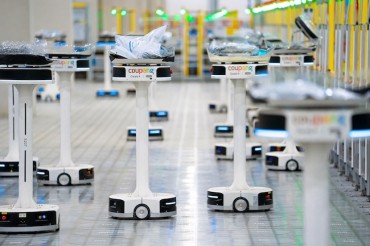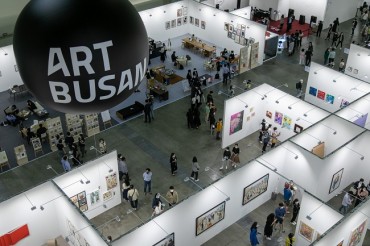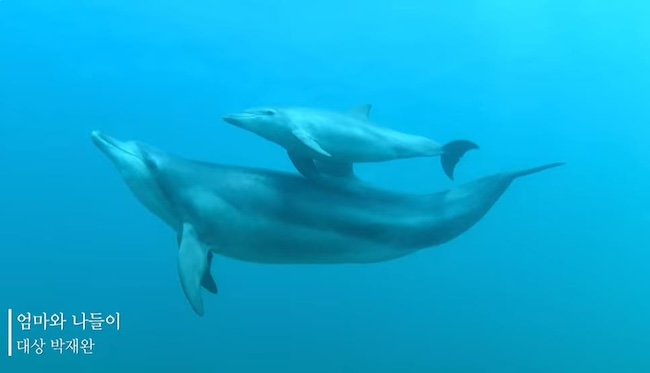
Park Jae-wan’s mesmerizing photograph titled “Outing with Mom.” (Image courtesy of the National Marine Biodiversity Institute of Korea)
SEOCHEON, Oct. 17 (Korea Bizwire) – The National Marine Biodiversity Institute of Korea announced on Monday that it had awarded the grand prize to Park Jae-wan’s mesmerizing photograph titled “Outing with Mom.”
This captivating image beautifully captures a southern bottlenose dolphin through the lens and has been crowned as the pinnacle of this year’s marine life underwater photography competition.
The winning photograph, depicting a mother and her calf swimming gracefully off the scenic coast of Jeju Island, stood out for its exceptional planning, expressive depth, and masterful composition. Jeju Island serves as the natural habitat for the southern bottlenose dolphin, which spends most of its life in these waters.
The southern bottlenose dolphin boasts a lifespan of approximately 40 years and typically gives birth to a single calf after a 12-month gestation period.
It is widely acknowledged that the distinctive distribution of these dolphins around Jeju’s coast is significantly influenced by the low noise levels generated by wind farms. These wind farms are an integral component of the island’s renewable energy initiatives.
Jeju Island’s southern bottlenose dolphins often make headlines in the news. One of these dolphins, named Sampal, was used in dolphin shows for three years before returning to the waters around Jeju. Recently, Sampal gave birth to her third calf, which is quite unusual for a previously captive dolphin released into the wild.
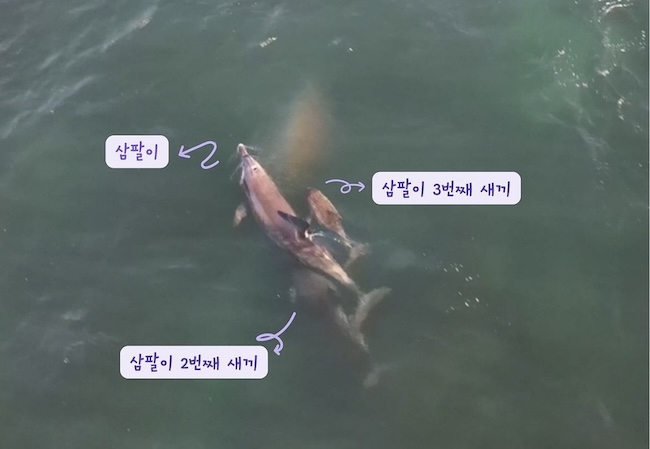
Sampal swimming with her recently delivered third child (Photo: Marine Animal Research and Conservation Center (MARC) Instagram capture.)
On October 4, the Marine Animal Research and Conservation Center (MARC) shared the news on social media that Sampal had welcomed her third calf. MARC reported that Sampal had been spotted with her new baby dolphin since last month.
Sampal was born on Jeju Island and, at around 10 years old in 2010, was illegally captured in Aewol-eup, Jeju City. She was then sold to a company that used her in dolphin shows at aquariums for three years. Eventually, a court ruling led to the confiscation of illegally captured dolphins, and a project was initiated to release them back into the wild.
Unfortunately, not all news of dolphins released to the wild has been positive. The fate of another southern bottlenose dolphin named Bibong, believed to be the last one in a South Korean aquarium, remains uncertain. After spending 17 years in captivity, Bibong was released back into the wild on October 16 of last year, exactly one year ago, following more than two months of training to adapt.
Bibong, who was initially captured in 2005 near Biyang Island, Jeju, has been missing since the day of its release. Despite efforts to locate the animal, its whereabouts remain unknown. Animal rights organizations are urging the government to confirm Bibong’s fate and determine what went wrong with the release.
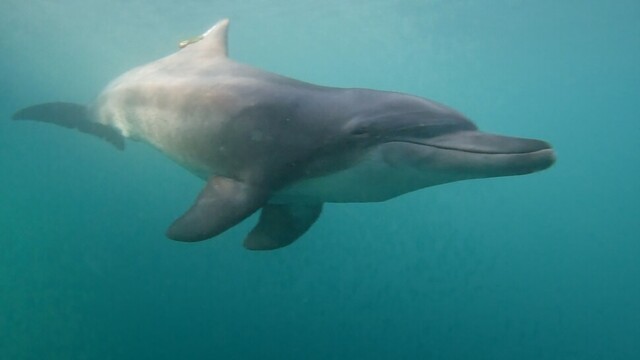
Jeju’s southern bottlenose dolphin ‘Bibong’ was released into the wild on Oct. 16 last year after 17 years of living in an aquarium, but has not been seen since a year later. (Photo: Courtesy of the Ministry of Oceans and Fisheries)
On the one-year anniversary of Bibong’s release, the Korean Animal Welfare Association held a press conference in Seoul and insisted that the government must be transparent about the release process and investigate the reasons for the release’s failure.
A representative from the Korean Animal Welfare Association noted, “Given the nature of the southern bottlenose dolphin, it’s reasonable to assume that Bibong, who hasn’t been found a year after release, may no longer be alive. Considering the purpose of the release was to offer a better life for the animal, the situation is concerning.”
Meanwhile, this year’s photography competition, which ran for a span of two months starting in July, received a remarkable total of 317 submissions from 125 different participants, marking a significant increase compared to last year.
The winning images will be featured in the upcoming year’s desk calendar and will also be accessible for viewing on the National Marine Biological Resource Center’s website at www.mabik.re.kr.
M. H. Lee (mhlee@koreabizwire.com)



